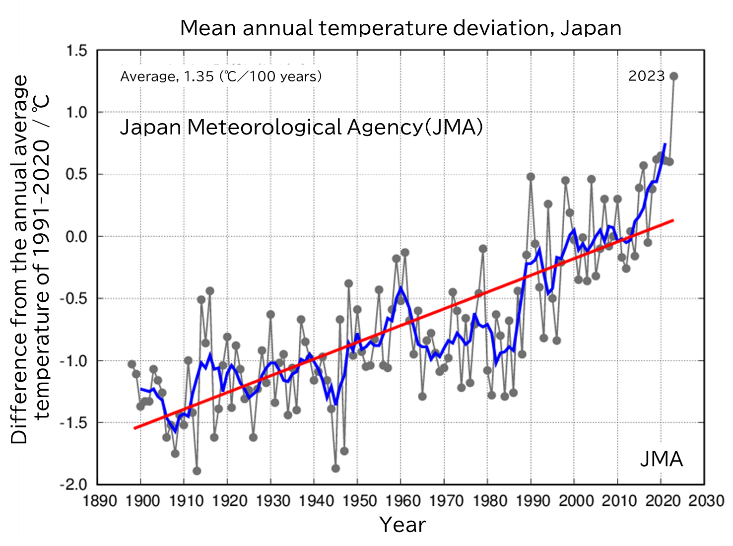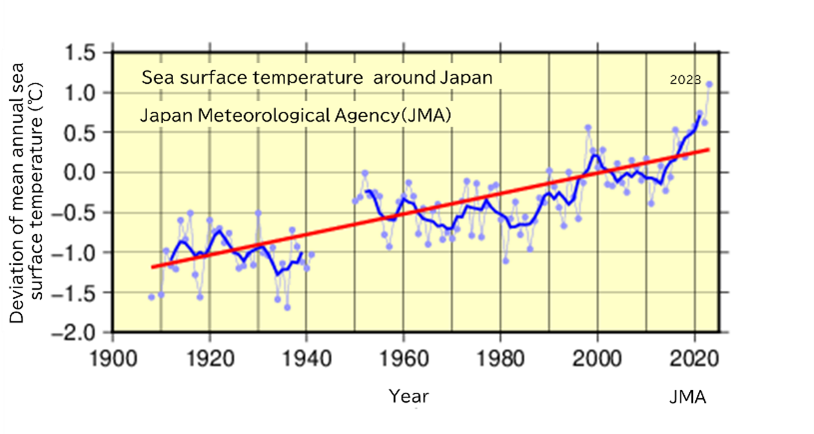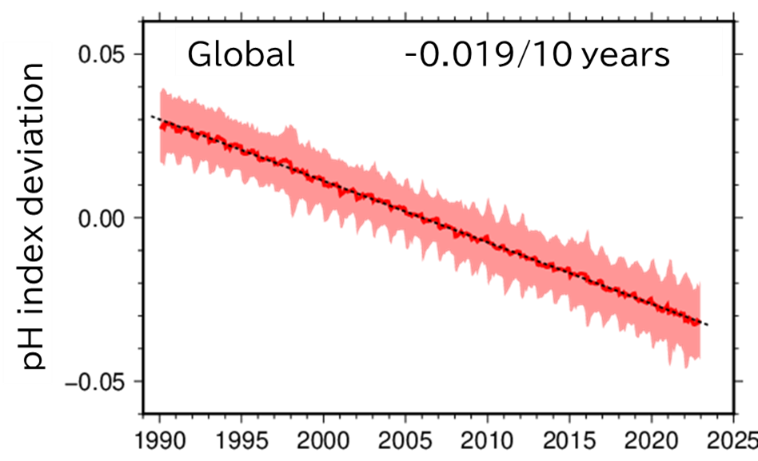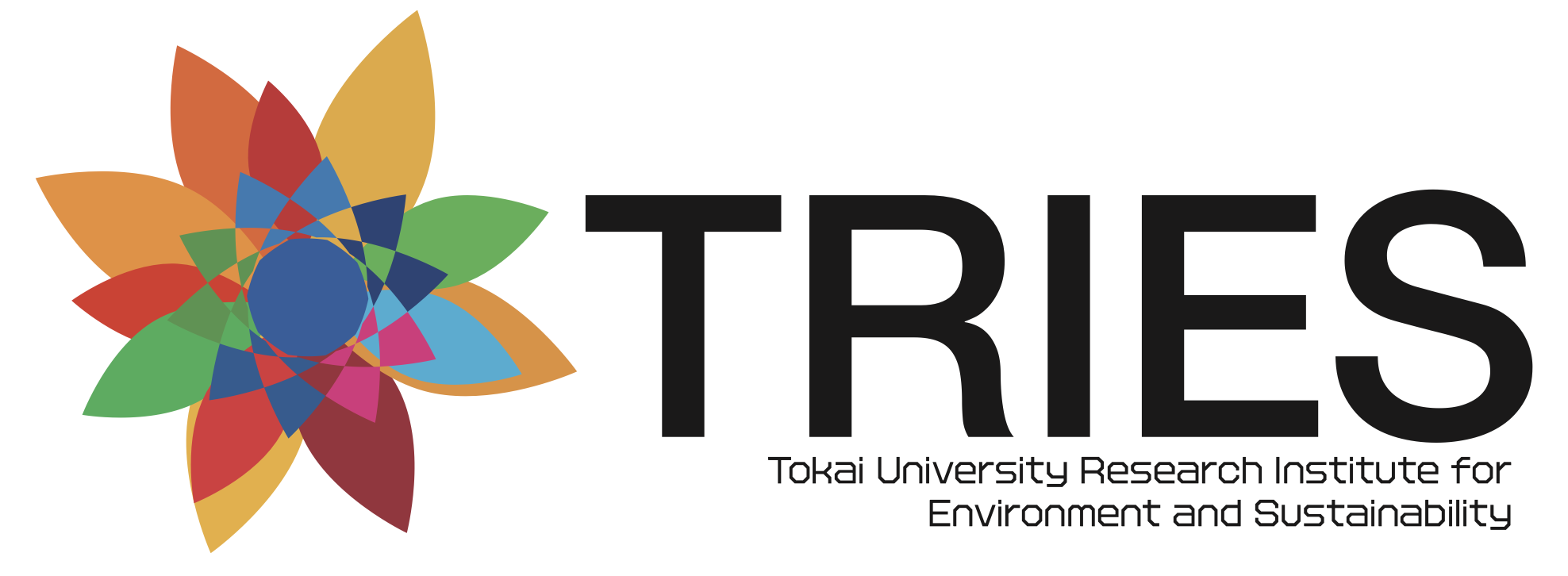Fisheries Industry in the Future
11/01 2024
Author: Haru-Hisa Uchida
In Japan, days with temperatures exceeding 25°C continued until mid-October. This is record-breaking.
This warming, which has been gradual, was followed by discontinuously higher temperatures last year and also followed this year.
This discontinuity may be a sign that climate change has entered a unreversible new mode of global warming. (See Figure 1)[1]

The temperature of the ocean surface around Japan is known to change on an approximate 10-year cycle, and we can see that it has been rising in the same manner as the rising temprature of the atmosphere over the past few years. (See Figure 2) [2]

Given that the heat capacity of seawater is much greater than that of the atmosphere, the impact of increasing temperatre of sea suraface water may be beyond imagination.
CO2 dissolves well in seawater, and seawater holds 100 to 150 times more CO2 than the atmosphere. At high temperatures, it is desorbed to the atmosphere, but it dissolves in seawater far more CO2 than in the atmosphere.
And that increasing amount leads to the acidification of seawater. Between 1990 and 2020, the pH index of the world's seawater has decreased by about 0.02. (See Figure 3) [3].

In the ocean, plankton, corals, and other organisms use calcium ions flowing in from rivers and other sources and CO2 from the atmosphere to form calcium carbonate(CaCO3) and build their own skeletons.
As more CO2 dissolves into seawater, the water becomes more acidic; a lower pH in turn dissolves calcium carbonate, which in turn releases more CO2 into the atmosphere.
Ocean acidification could affect coral growth and plankton skeleton (CaCO3) formation, and it is feared that it could also affect the growth of fish eggs and hatchlings, which could significantly disrupt the ecosystem in the marine environment.
The rise in sea water temperature has had a particularly large impact on the fisheries industry, including a sharp decline in landings at empirical fishing grounds and catastrophic damage to yellowtail and other sea-fronted aquaculture because of their inability to adapt to the rising temperature.
Further increases in temperatures are expected sea level rising induced, which will have an impact on fisheries facilities near the coast and other environmental changes.
The acidification of seawater has additional potential to drastically alter the ecosystem, and the impact on the fishing industry could be devastating.
The scale of the fisheries industry in Japan has declined to approximately 1.6 trillion yen [4] (the livestock industry is approximately 3 trillion yen and agriculture is approximately 9 trillion yen [5]).
We should further revitalize Japan as marine nation with a view to improving Japan's food self-sufficiency rate by launching Advanced Land-based Aquaculture* and other fisheries industries that are less affected from global warming and environmental chaqnges. To this end, it may be necessary for a wide range of industries and organizations to become more actively involved in the fisheries industry.
※ “Advanced Land-based Aquaculture” refers to a new approach that uses renewable energy, maintains an artificial and positive aquaculture environment along with water quality management, and aims for a completely closed system with independing small fish feeding, but including land-based proteins and algae cultured.
[1] Figure 1, JMA, Annual average temperature in Japan,
https://www.data.jma.go.jp/cpdinfo/temp/an_jpn.html
[2] Figure 2, JMA, Long-term sea surface temperture (SST) trends (near Japan)
https://www.data.jma.go.jp/kaiyou/data/shindan/a_1/japan_warm/japan_warm.html
[3] Figure 3, JMA, Long-term trend of pH change in surface seawater (global),
https://www.data.jma.go.jp/kaiyou/shindan/a_3/pHglob/pH-glob.html
[4] Fisheries Production Value, Ministry of Agriculture, Forestry and Fisheries, Fisheries White Paper 2023,
https://www.jfa.maff.go.jp/j/kikaku/wpaper/R5/attach/pdf/240611_3-4.pdf
[5] Livestock and Agricultural Production Value, Situation of Livestock and Dairy Farming, Livestock Production Bureau, Ministry of Agriculture, Forestry and Fisheries, December 2021.、
https://www.maff.go.jp/j/council/seisaku/tikusan/attach/pdf/211224siryo-3.pdf
